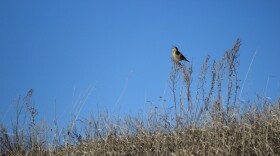The heavy snow this winter has led to lots of speculation of spring flooding on rivers and streams across the state. Floods, of course, can cause horrendous damage to property within the floodplain. That aside, many among us may have never learned that flooding is a natural process, and seasonal floods that inundate the floodplain are a natural part of healthy rivers.
One of the more commonly mentioned benefits of flooding is that it distributes sediment along with a rich supply of nutrients over the floodplain. And the river’s flow is slowed down as the water spreads out on the floodplain.
As the floodplain remains inundated (usually for a short time), the soil acts as a natural filter, filtering out pollutants as the water passes through the soil. That water may end up recharging the groundwater or perhaps an aquifer.
Within the floodplain, temporary or seasonal wetlands may be created, which provide important habitat for many plants and animals, including waterfowl and shorebirds. These wetlands may also function as nurseries for fish and aquatic invertebrates that serve as a food for a whole host of animals.
Along many rivers and streams that still flood seasonally, young and old cottonwoods are often observed. However, damming rivers eliminates the seasonal flooding, and cottonwood recruitment ceases. The result is often some old, dead, or dying cottonwood and younger green ash that are replacing them.
The distribution of sediment and nutrients on the floodplain also increases the productivity of the floodplain. Historically, that often included conditions conducive to the establishment and growth of cottonwood trees.




